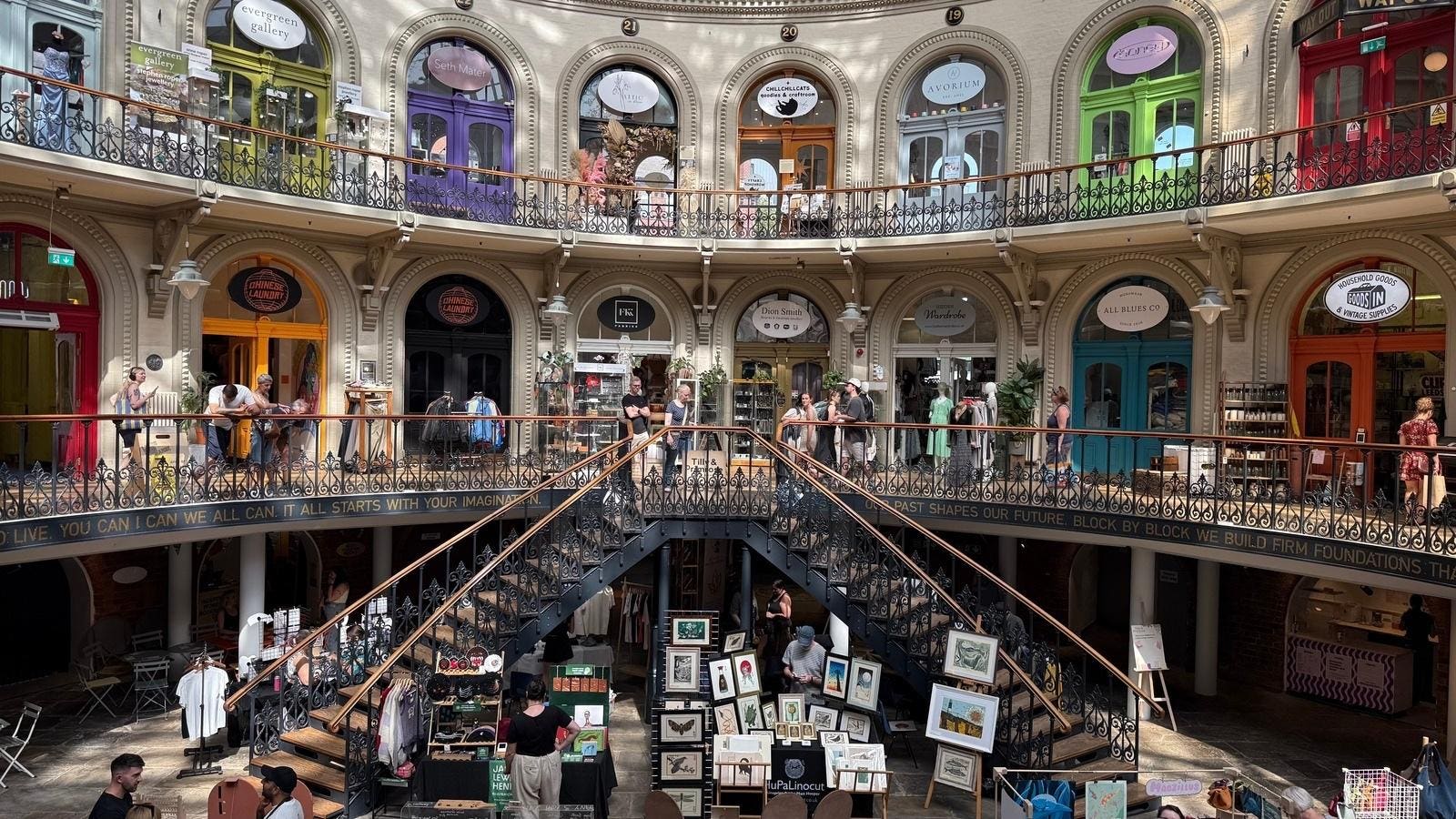Leeds Corn Exchange is a striking former grain market turned thriving independent retail hub.
David Nikel
Tucked between the better-known tourist destinations of Manchester and York, the West Yorkshire city of Leeds doesn’t always top international travel itineraries.
But for those who make the journey, there’s a surprise waiting in the heart of the city: a shopping district that blends ornate 19th-century architecture with cutting-edge design in a way that few places in the U.K. manage.
Strolling through downtown Leeds reveals a patchwork of eras, from the cast-iron and mosaic elegance of the Victoria Quarter to the soaring glass canopy of Trinity Leeds.
Independent boutiques thrive within the historic Corn Exchange, while flagship brands anchor pedestrianized streets steps away. Leeds invites you to look up while you shop.
Leeds’ Legacy Of Architecture And Commerce
Leeds owes much of its retail charm to the city’s rapid expansion during the 19th century, when the textile industry brought wealth and ambition to Yorkshire.
As mills and factories transformed the region, the city center became a showcase of Victorian architecture, much of which still defines the shopping experience today.
Designed to protect shoppers from the unpredictable northern weather, the covered arcades of Leeds combined function with style. Glass ceilings, decorative tiling, and intricate ironwork created elegant spaces that elevated everyday commerce.
The Victoria Quarter is an historic shopping arcade in downtown Leeds.
David Nikel
Far from being relics, these arcades have been carefully restored and adapted for modern use.
The Grand Arcade, Thornton’s Arcade, and Queen’s Arcade each offer their own distinct atmosphere, but the standout is the Victoria Quarter, where intricate stonework and an impressive stained-glass window create a setting as impressive as the boutiques within.
Anchored by a Harvey Nichols store set within a restored former theatre, the Victoria Quarter is home to luxury fashion brands and contemporary art galleries, all framed by exquisite 19th-century design, fully restored and glazed over in the late 20th-century.
Just across the street, Victoria Gate continues the theme in a striking modern form. Inspired by the lines and craftsmanship of the original arcades, its bold geometric facade and sweeping interiors host a John Lewis department store, serving as a modern counterpart to the grandeur of its Victorian neighbor.
Leeds Corn Exchange: A Circular Icon Reinvented
If the arcades are a tribute to Victorian elegance, Leeds Corn Exchange is a bold example of how historic architecture can evolve.
Completed in 1864 as a trading hall for grain merchants, the building was designed by Cuthbert Brodrick, the same architect behind Leeds Town Hall. Its domed roof and circular interior made it a marvel of its time, both structurally and stylistically.
The coffee shop is a natural social space at the heart of Leeds Corn Exchange.
David Nikel
After falling into disuse in the late 20th century, the Corn Exchange has undergone a thoughtful revival. Today, it operates as a hub for independent retailers and artists.
Indie Makers and The Great Yorkshire Shop are among the stores selling local wares and souvenirs, while Fabulous Planning is a family-run stationary shop with a focus on notebooks and planners. Shop Japanese gifts and fashion at Giant Kitten or pick up some deli items for a leisurely lunch at The Cheesy Living Co.
The curved balconies and central atrium create a naturally social space, the perfect spot for the popular coffee shop and a weekend market.
Old Meets New At Leeds’ Kirkgate
Just a short walk from the arcades and the Corn Exchange lies Kirkgate, one of the oldest streets in Leeds and a reminder of the city’s commercial roots.
The area is anchored by Kirkgate Market, a sprawling indoor market that has been in operation since 1857 and famously served as the launchpad for Marks & Spencer, which began as a penny stall here in 1884.
Today, the market is a lively mix of fresh food vendors, street eats, textiles, and budget-friendly household goods. It offers a different pace from the more polished arcades and shopping centers, but that contrast is part of its charm.
Big Names At Trinity Leeds
When it opened in 2013, Trinity Leeds marked a new chapter for the city’s retail scene.
Leeds Trinity is dominated by this soaring glass dome.
David Nikel
Designed to unify several previously disconnected shopping streets, the development reimagined the traditional mall by blending indoor and outdoor spaces beneath a dramatic glass canopy.
The result is a striking architectural statement that feels both contemporary yet still connected to the streetscape around it.
Its open-air walkways, sweeping roof structure, and public art including a giant leaping horse sculpture create a sense of scale and movement. Trinity houses a wide range of high street brands, a food hall, bars and a boutique cinema, positioning itself as a day-to-night destination.
Unlike many modern malls that could be anywhere, Trinity feels rooted in the city with the tower of Holy Trinity Church visible through the glass roof. It complements the older arcades rather than competes with them, proving that thoughtful design can help a city grow without losing its character.
MORE FROM FORBES
ForbesWhy London’s British Museum Remains A Must-See Despite ControversiesBy David NikelForbesWhy Joining Britain’s National Trust Is A Travel BargainBy David NikelForbesThe Coolcation Trend Is Heating Up, And The Numbers Prove ItBy David Nikel
Editorial StandardsReprints & Permissions
